Development of Human Factors Guidelines for Advanced Traveler Information Systems and Commercial Vehicle Operations: Task Analysis of ATIS/CVO Functions
APPENDIX D. DETAILED TASK ANALYSIS
COMMERCIAL SCENARIOS
Scenario C12
Scenario C13
Scenario C4
Scenario C11
Scenario C15
Scenario C12
Purpose To illustrate the functional characteristic that had the greatest frequency count (dynamic route selection) and the one that was considered the most central (dispatch).
Summary It is Friday evening, during rush hour traffic, just before a holiday. The commute is slow because it is snowing and several accidents obstruct traffic circulation. A central dispatcher for medical aid vehicles in a large metropolitan area is working her normal evening shift. She receives two concurrent emergency calls for aid required at a freeway accident and a private residence. The dispatcher enters the locations of the emergencies into her routing system and the system determines the appropriate medical aid vehicle stations to call and the appropriate routes to take, based on the fastest predicted travel time under current traffic and road conditions. Upon receipt of that information, she informs the appropriate drivers of the new destination and route to take. The drivers enter the routing into their ATIS and activate IVSAWS to provide them with updated road condition information. As one of the drivers is driving to the residential call, he is informed of severe icing along the route. He requests a route change from his ATIS and continues to the residence.
Function Interaction Diagram See figure 45.
Operational Sequence Diagram See figure 46.
Task Characterization See table 63.

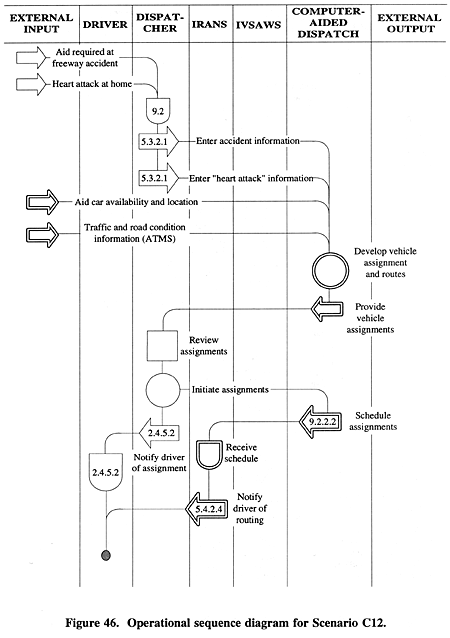
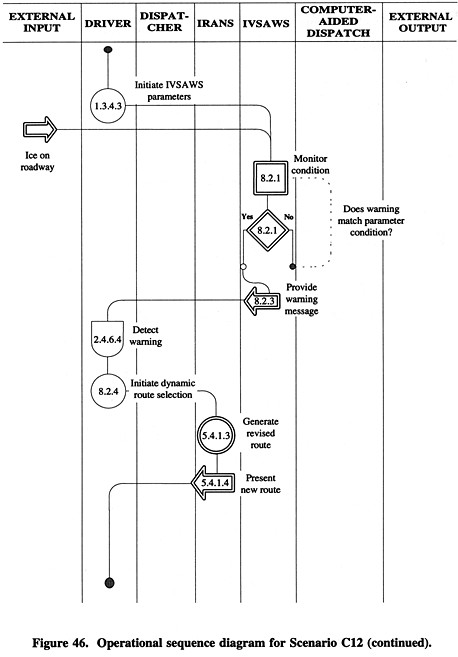
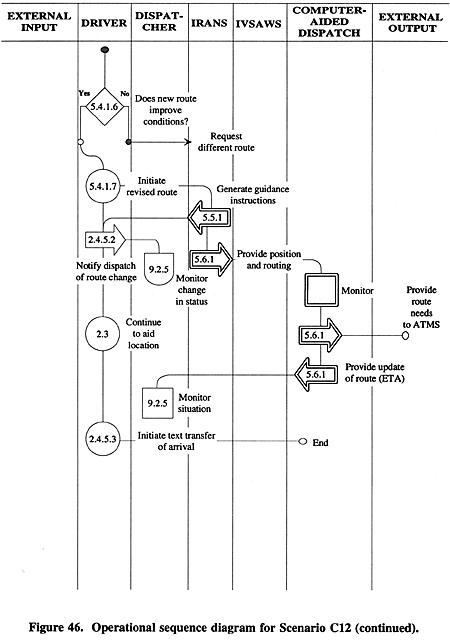
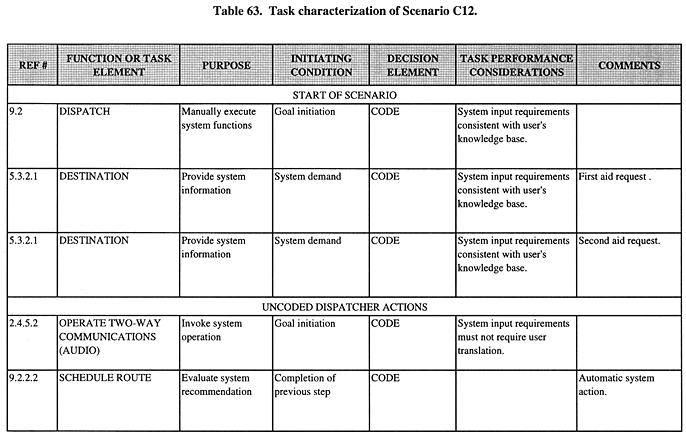
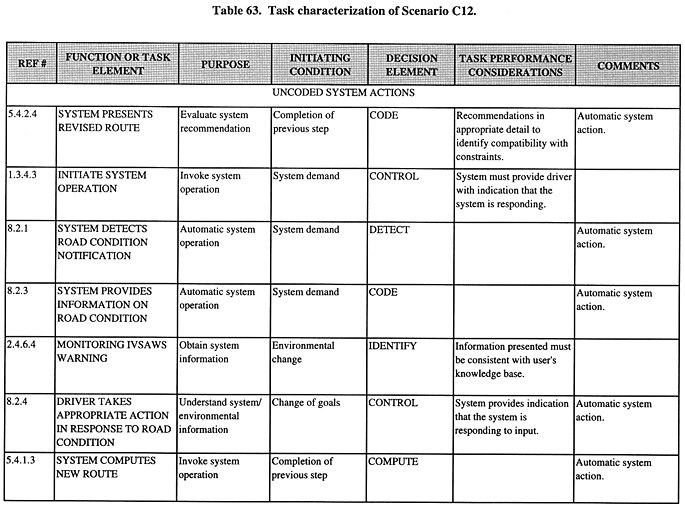
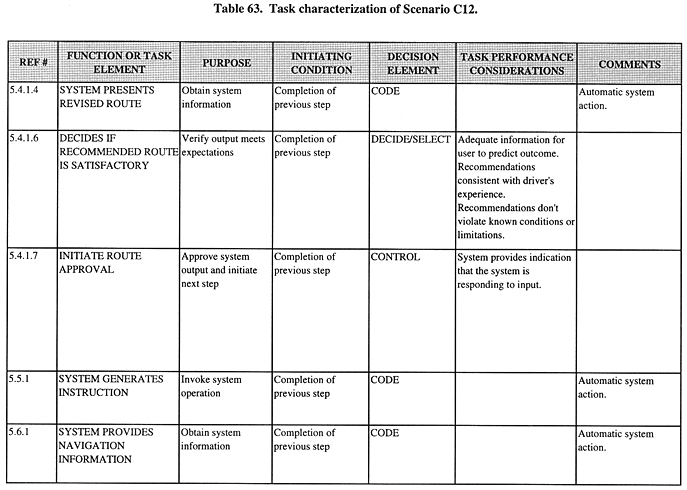
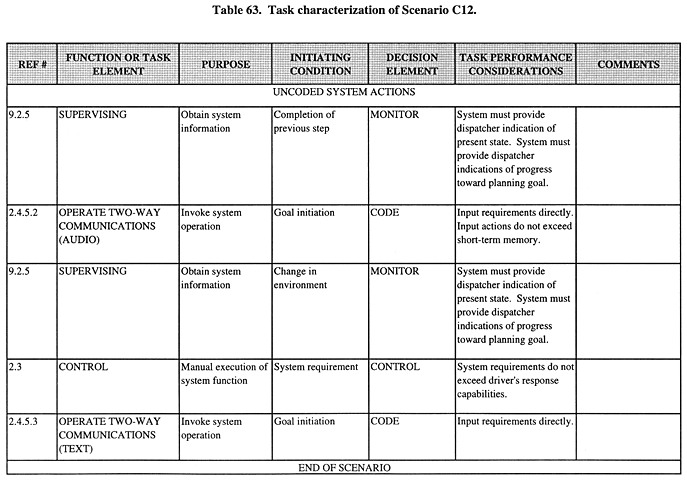
Commercial Scenarios
Top
Scenario C13
Purpose To illustrate a grouping of functional characteristics from Cluster 1 (5.3, 5.8, 6.3, 6.4, 8.2, 9.1, and 9.2).
Summary A central dispatcher coordinates the progress of 20 separate vans that provide door–to–door airport transportation in one suburban section of a major metropolitan area. Service is provided on demand so that calls are responded to within a specified period of time. If the caller is not picked up within the specified time, the cost of the ride is reduced by 50 percent and a report must be filed by the driver and dispatcher. A dispatcher is also rewarded for making the maximum use of available vans, as determined by the fleet routing system. The dispatcher prepares the first pickup schedule of the day and transmits this information to the drivers.
Function Interaction Diagram See figure 47.
Operational Sequence Diagram See figure 48.
Task Characterization See table 64.


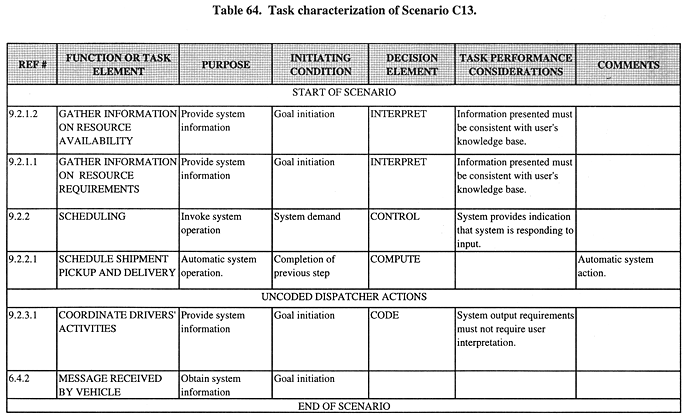
Commercial Scenarios
Top
Scenario C4
Purpose To illustrate a grouping of the functional characteristics found in Cluster 2 (5.4, 5.6, 7.1, 7.2, and 8.1).
Summary A young interstate truck operator is traveling at night on a narrow, two–lane road. As he is traveling, his IVSAWS provides advance warning of the road closure due to a new construction zone ahead. Because the road closure occurs just prior to a planned refueling stop, the driver uses his ATIS to determine the nearest service station. Having selected one, he requests a dynamic route change to proceed to the station and the help of the ISIS to provide speed–limit transitions, street signs, and merge signs.
Function Interaction Diagram See figure 49.
Operational Sequence Diagram See figure 50.
Task Characterization See table 65.

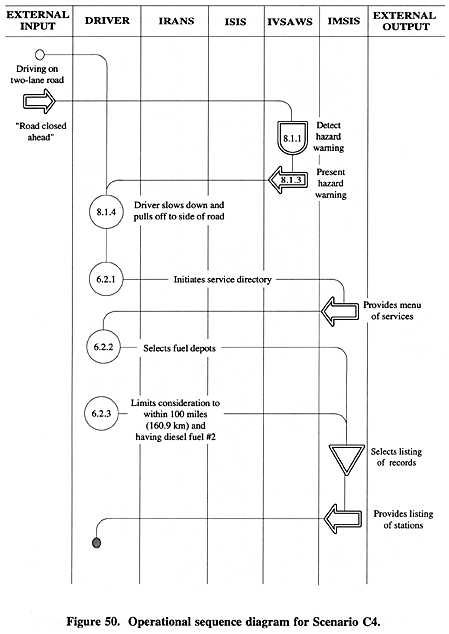
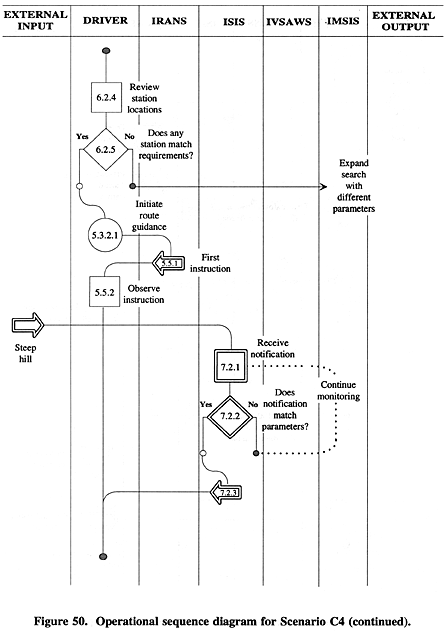
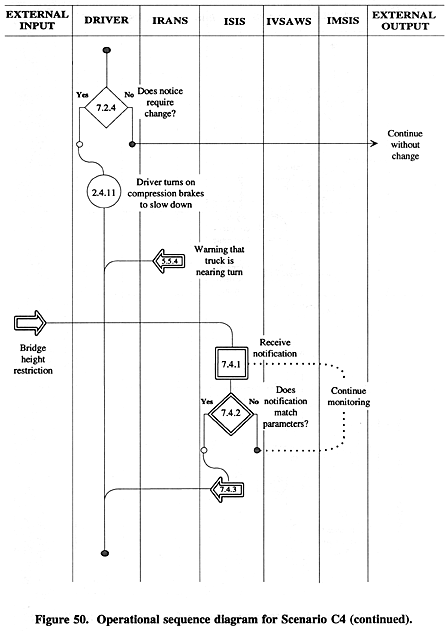
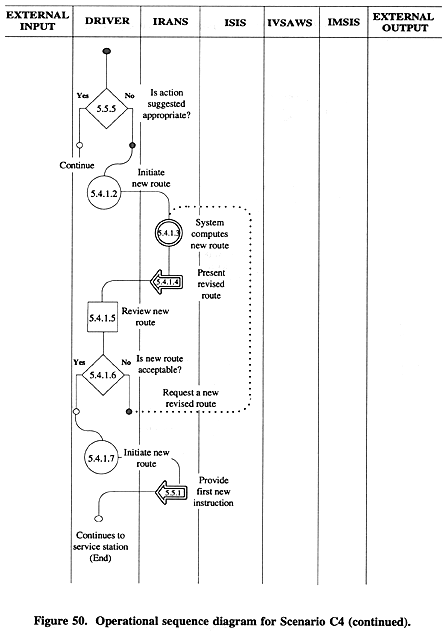
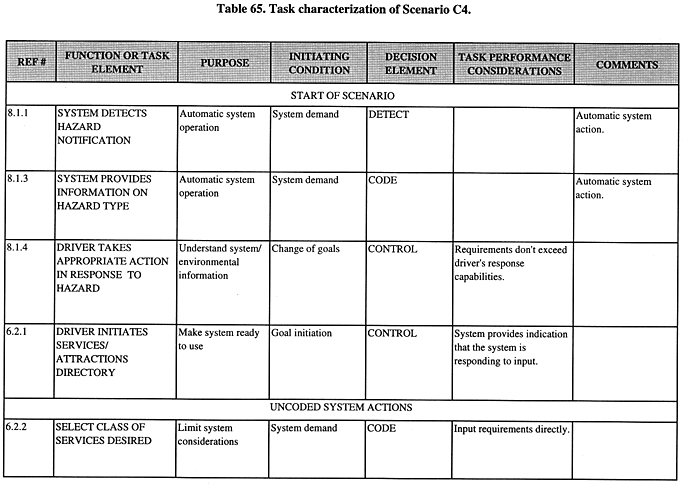
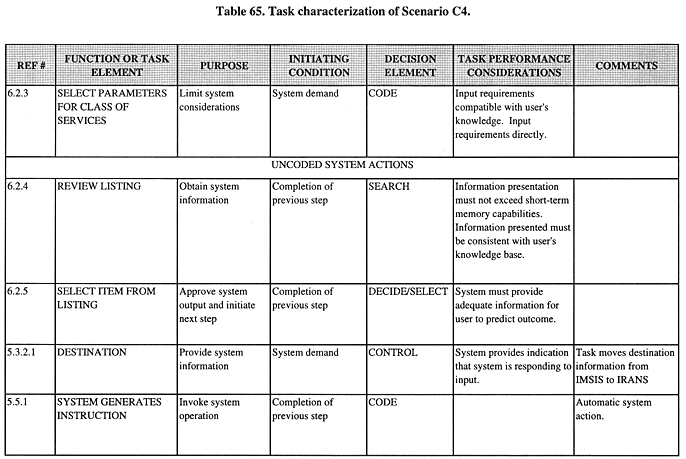
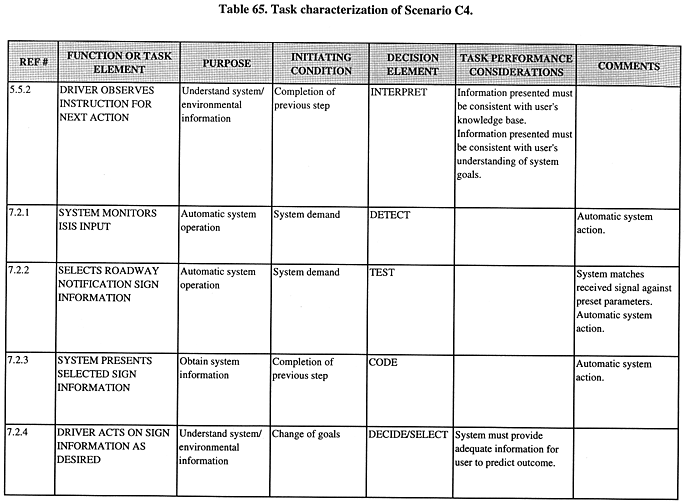
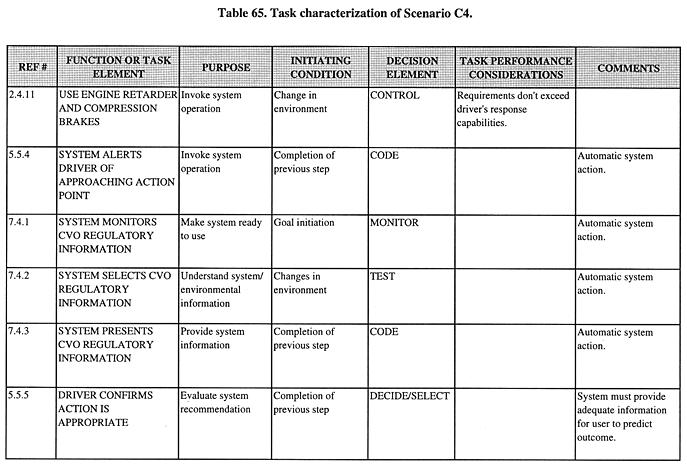
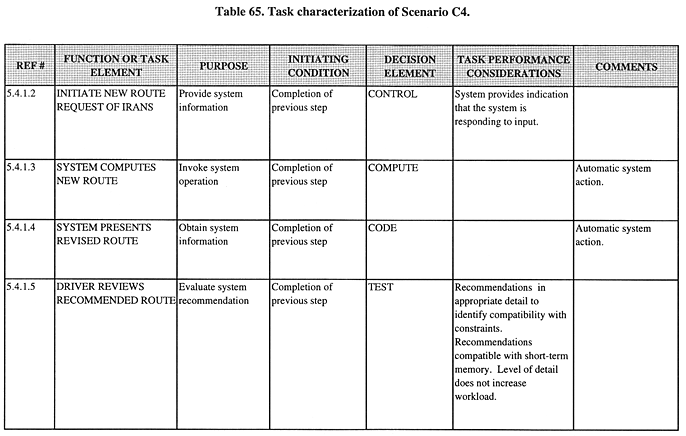
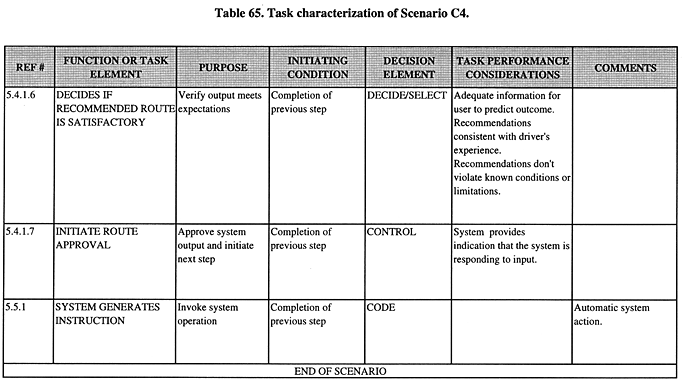
Commercial Scenarios
Top
Scenario C11
Purpose To illustrate a grouping of functional characteristics from Cluster 3 (5.1, 5.2, 5.7, 9.3, and 9.4).
Summary An experienced interstate truck operator is passing between two States at nighttime. Prior to reaching the inspection point, her WIM system advises her to move to the right-hand lane, where her vehicle is weighed while traveling at normal speeds. Simultaneously, a sensor reads the truck's electronic credentials to validate safety records and debit the trucking company's account for road taxes. Finally, the driver's electronic credentials are verified to ensure that her driver's license and permits are up to date and that her operating hours have been within the legal limits. The driver receives notification that all transactions have been performed successfully, and she proceeds at normal speed past the inspection point.
Function Interaction Diagram See figure 51.
Operational Sequence Diagram See figure 52.
Task Characterization See table 66.


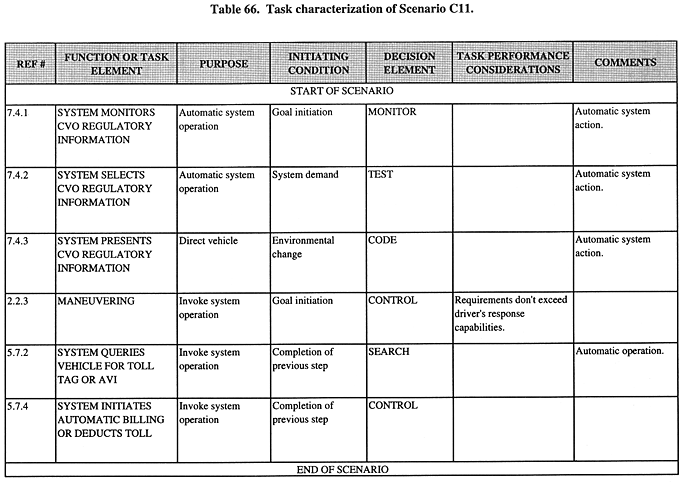
Commercial Scenarios
Top
Scenario C15
Purpose To illustrate a grouping of functional characteristics from Cluster 5 (6.1, 6.2, 8.4, 8.5, and 8.6).
Summary An interstate truck operator is traveling on the interstate early Sunday morning. As he is driving, his "Cargo/Vehicle Condition Monitoring" informs him of a malfunction with one of the trailer's axles. The driver pulls over, checks it, and determines that help is needed. Using the ATIS, he selects a service station that is open at that time and requests their assistance.
Function Interaction Diagram See figure 53.
Operational Sequence Diagram See figure 54.
Task Characterization See table 67.

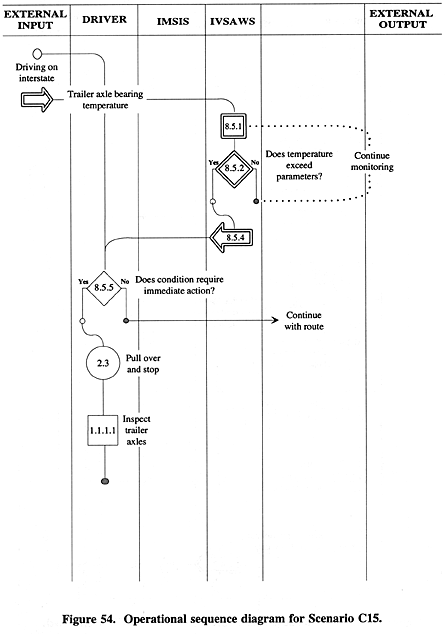
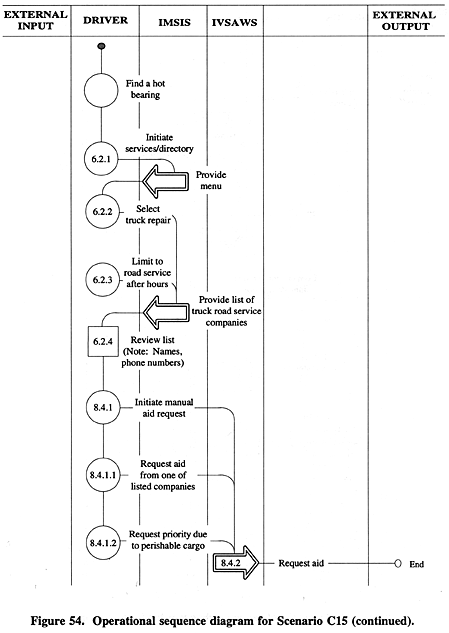
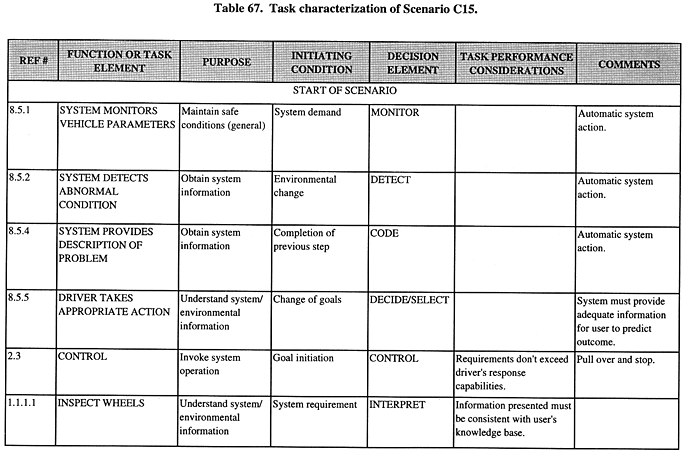
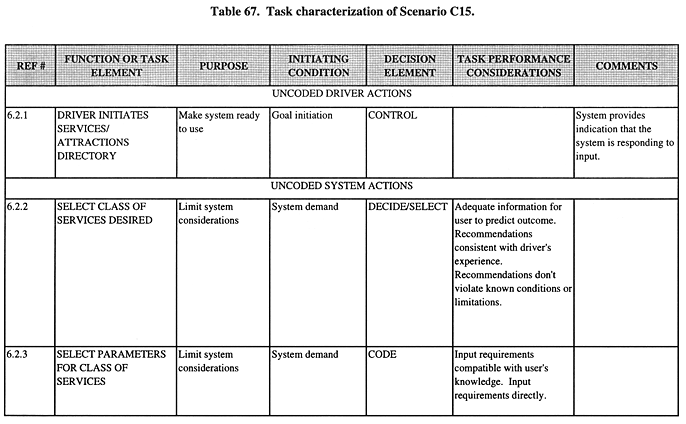
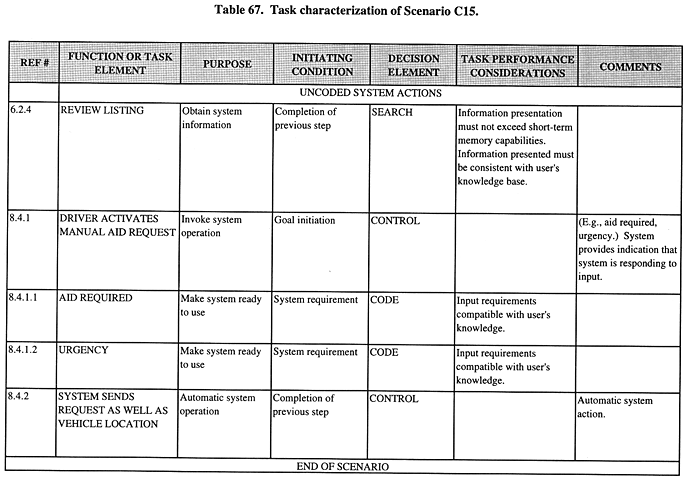
Commercial Scenarios
Top
FHWA-RD-95-176
|
